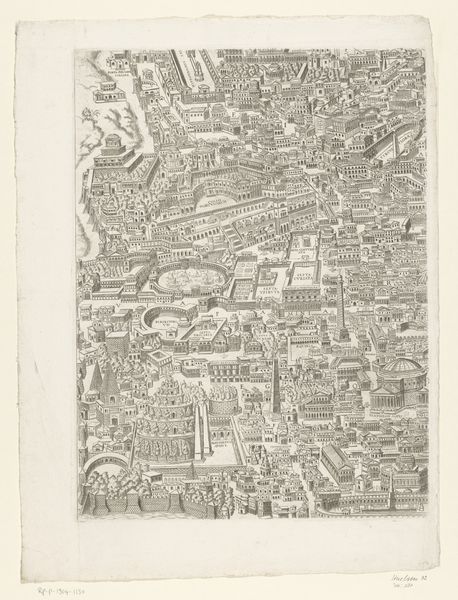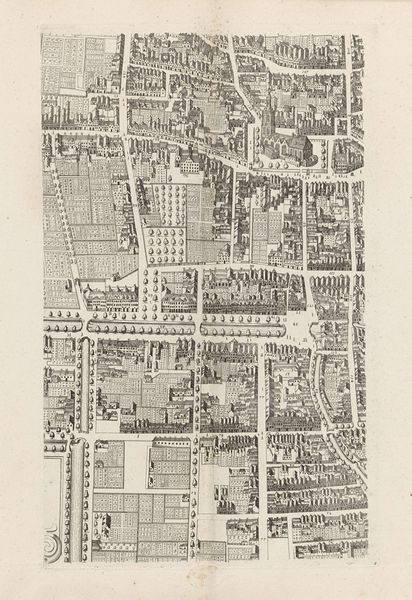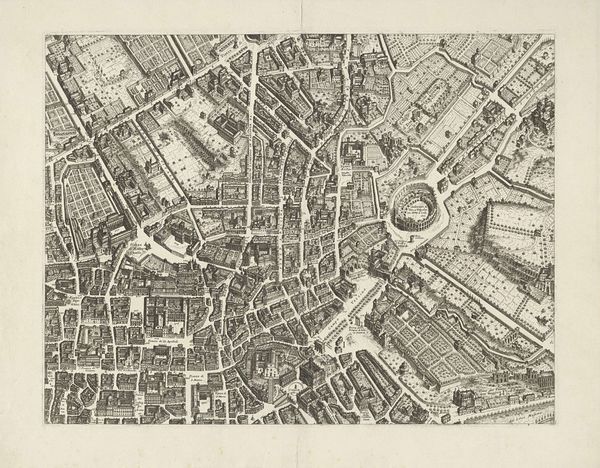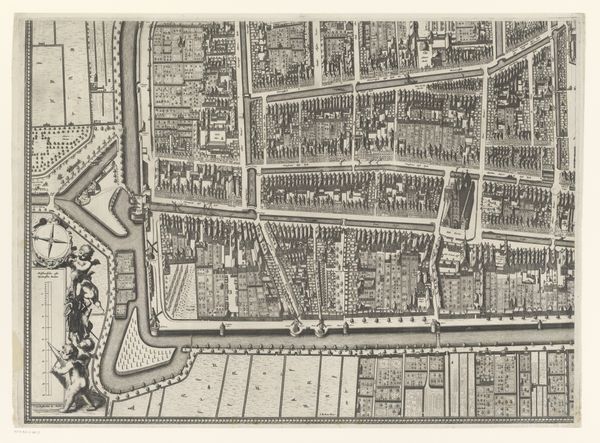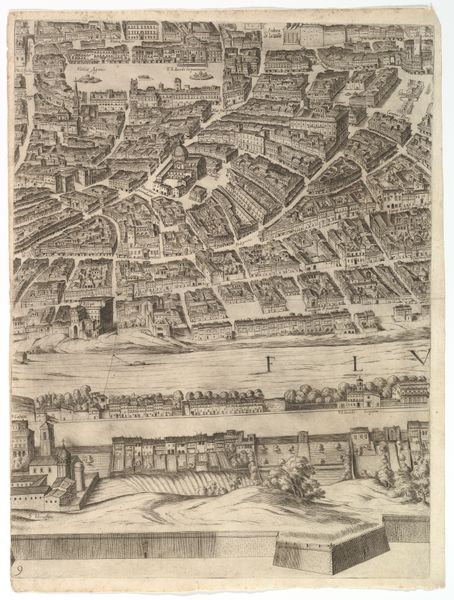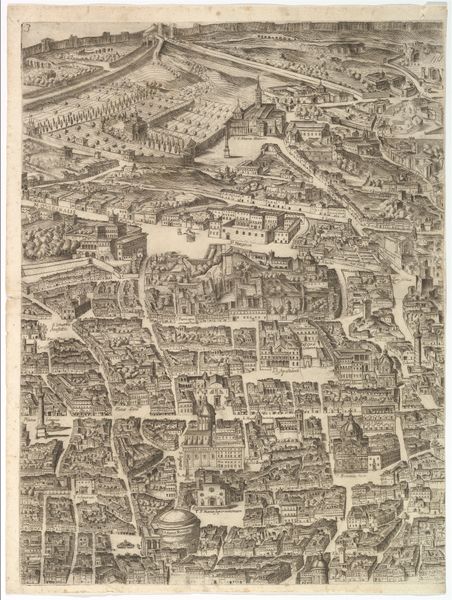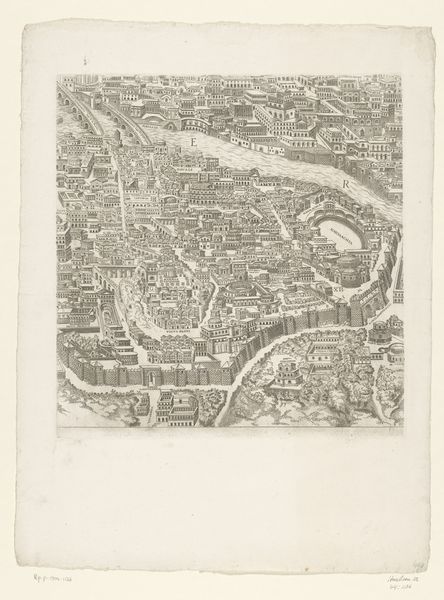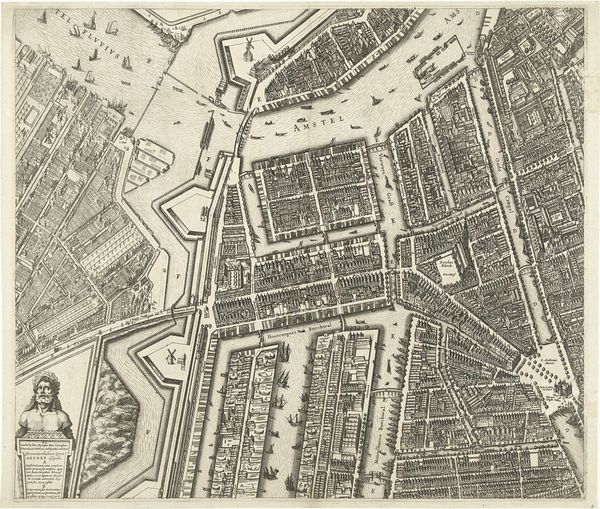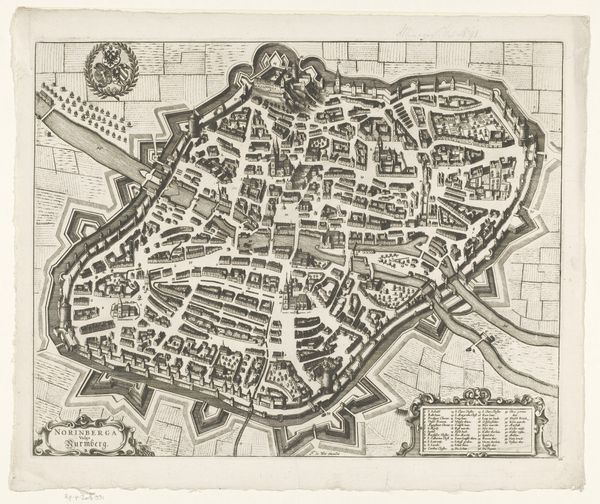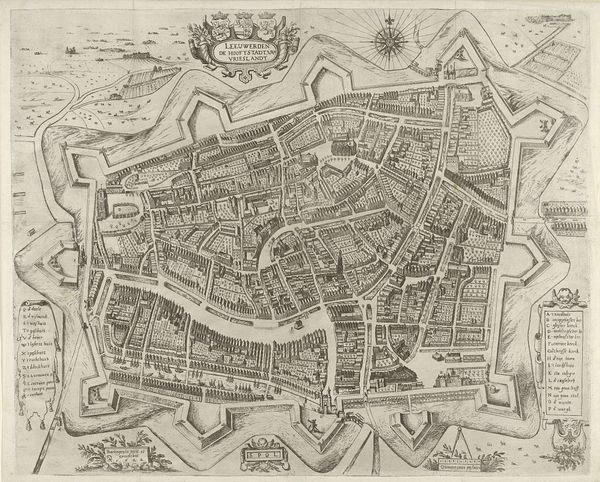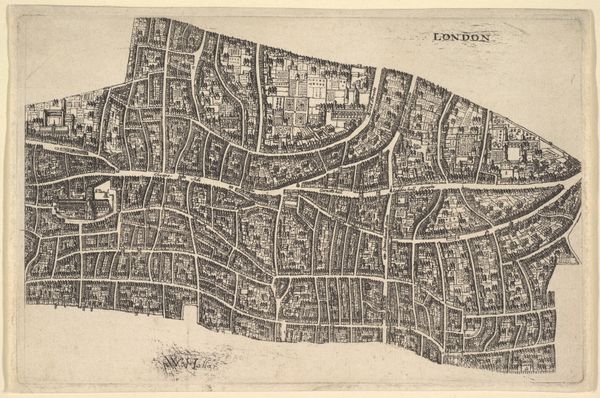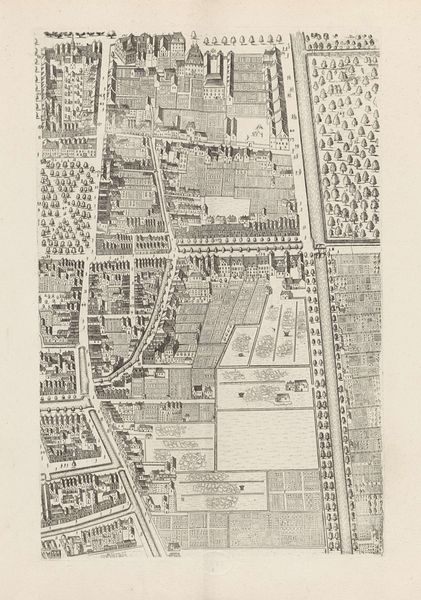
drawing, print, ink, engraving
#
drawing
#
dutch-golden-age
# print
#
pen sketch
#
ink
#
cityscape
#
engraving
Dimensions: height 548 mm, width 651 mm
Copyright: Rijks Museum: Open Domain
Editor: Here we have a section of “Plattegrond van Den Haag,” or “Map of The Hague,” possibly created between 1665 and 1682 by Cornelis Elandts, using ink, engraving, and drawing. It's fascinating to see such a detailed cityscape rendered in pen and ink! What do you see in this piece, beyond just a map? Curator: More than bricks and mortar, isn't it? For me, this is about presence. It’s an entire world meticulously laid out with these fine strokes. I can almost feel the pulse of 17th-century Hague! The people are rendered so small, yet they fill the plazas – can you sense their communal life, their purpose? Are these the faces that would define Dutch identity for generations? I'd say this transcends the mundane. Do you get a sense of pride and maybe aspiration in the level of detail? Editor: I hadn’t thought of it like that. I was focused on the precision of the lines, the bird's-eye perspective. Now I'm seeing a community portrait, I suppose! A very, very granular one. It is incredible, all those tiny people captured with the same level of precision as the architecture. How did an artist achieve that? Curator: Patience, dear student, lots of patience, and a profound sense of connection to the place! Perhaps a touch of romanticising it as well. The crispness elevates something functional, like a blueprint, into an artefact worth cherishing. Did this change the way you initially interpreted the artist’s intentions? Editor: It does, actually! I came in thinking ‘historical document’, now I see it more as a... celebration, even? Thanks, that’s given me a lot to consider! Curator: And for me, it's been lovely revisiting those impressions; reminding me art speaks most strongly when we embrace its spirit, not merely its shape.
Comments
No comments
Be the first to comment and join the conversation on the ultimate creative platform.
